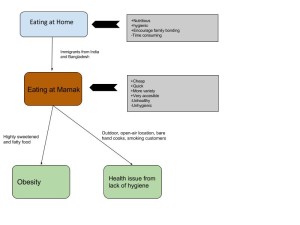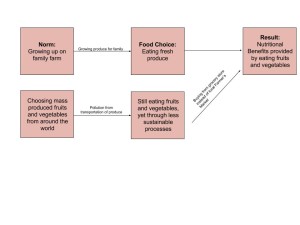Part of a social norm in my country is eating out. Compared to the States where there’s a lot of food chains and indoor restaurant, many of Malaysia’s food are sold on the streets (night markets and stalls) and open air restaurants. One of our favorite is to go to ‘Mamak’, usually run by immigrants from India or Bangladesh. They’re mostly popular for ‘roti canai’, a dough flipped on air with lots of oil involved (much like tossed pizza) and varieties of curries to enjoy it with. We prefer mamak because they are so cheap, they’re more accessible, and never boring. It has become part of our culture; teenagers go to mamak to hang out after soccer game, families go there to enjoy Indian foods, and blue collar workers go for their quick and cheap lunch. Another trademark of mamak is ‘teh tarik’, a super sweet milk tea.
The societal issue that comes with the introduction of mamak restaurants is the public health issue. These restaurants are usually open-air, close to open roads and in between busy buildings. The foods are also cooked in open kitchen, usually by someone without proper hygienic outfits. Food contamination is a big risk to our health, but still many people choose to eat at mamak rather than eating at home. Not just that, teh tarik and other sweet options at mamak has put Malaysia as the most obese country in Asia. We put sugar and fat on everything! Other than that, if mamak becomes more preferred, less and less households will choose to cook, thus decreasing the nutrinional and social value of a home-cooked meal. I belief we should make it a social norm in Malaysia to start planting vegetables or fruit plants again. That way people are encouraged to cook and eat healthier and at the same time teaching the younger generations to appreciate the work that goes into providing food and nutrition.


